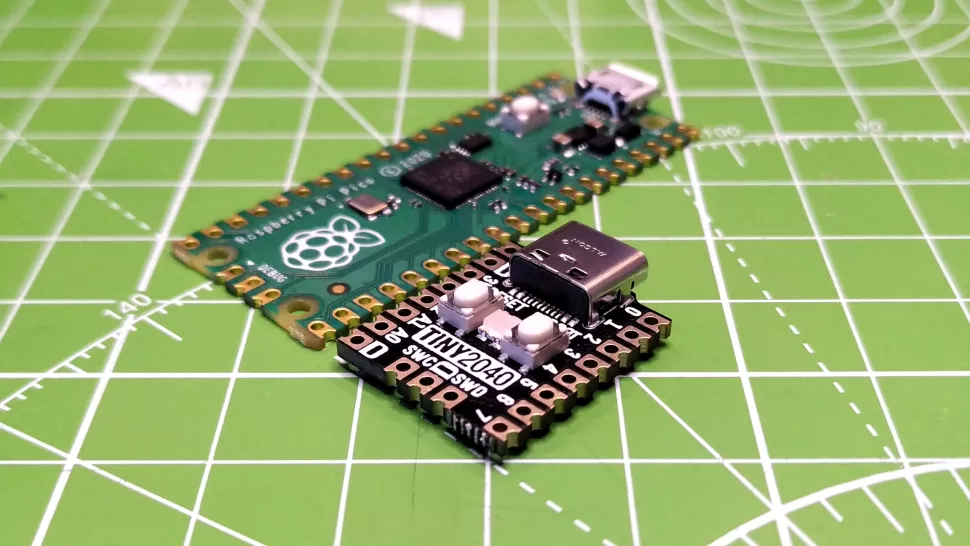
In January, we published a review of the Raspberry Pi Pico single board. In general, the price / quality ratio is excellent. But many board users lack additional features.
And now an alternative has appeared, and based on the SoC Raspberry RP2040, but with a large set of capabilities (looking ahead - this is not a wireless module). Plus, the size of the new item is only a third of that of the Raspberry Pi Pico. This miracle of technical thought is called Pimoroni Tiny 2040.
What's with the hardware?
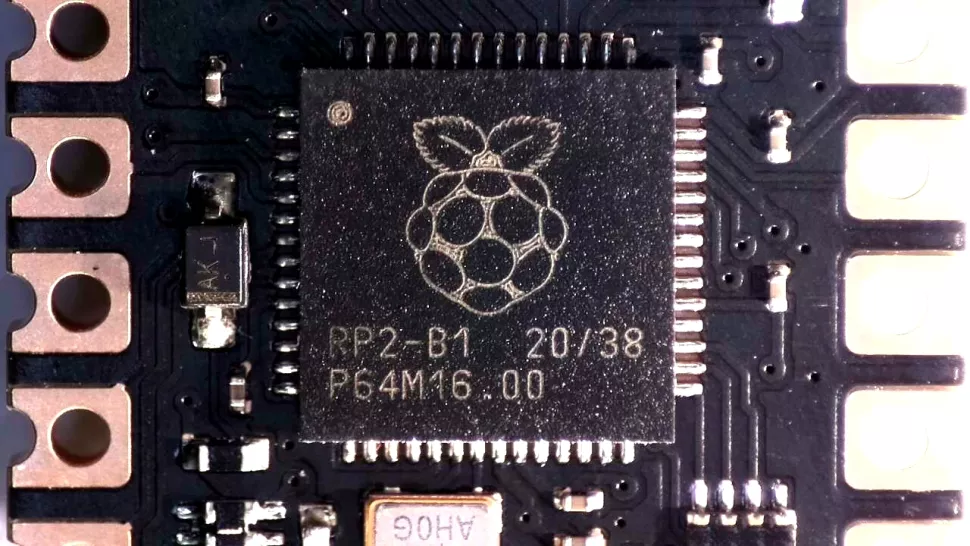
| RP2040 SoC | ARM Cortex M0 + running at up to 133Mhz |
| SRAM | 264kB |
| Flash Storage | 8MB of QSPI |
| GPIO | 16 GPIO pins. 7 x Digital I / O, 4 x Analog 12-bit ADC, 2 x I2C, SPI, UART, Debug |
| USB Port | USB C |
| Dimensions | 0.74 x 0.7 inches (19 x 18mm) |
If this was not required, you can start reviewing the new features of the board. Firstly, it has a Reset button, which is very convenient in many cases. Pico does not have one, so if something goes wrong, you have to unplug the board and then plug it back in. The button in the new board shorts the RUN line to ground, which causes the SoC to restart.
A more significant improvement is four ADC pins instead of three. This makes it possible to connect, for example, two analog joysticks instead of one, since each of them needs two ADC pins.
The third option is to add an LED to indicate the board status. The diode functions can be programmed using MicroPython and C / C ++.
And the fourth improvement is a whole 8 MB of file space in the internal flash storage. The base Pico is only 2MB. This makes it possible to download more code and libraries.
By the way, it is worth recalling the characteristics of the Raspberry Pi Pico itself. The basis of the board is a dual-core ARM Cortex M0 + chip, with a core frequency of 133 MHz. The board has 264 KB of RAM and 2 MB of flash memory. In addition, there is a USB 1.1 connector and I / O channels, of which 26 are available to the user. It is possible to use interfaces 2 x UART, 2 x I2C, 2 x SPI (up to 16 MB QSPI Flash with XIP), as well as 16 PWM- channels. A temperature sensor and 3 ADC channels are also available.
Pimoroni Tiny 2040 structure
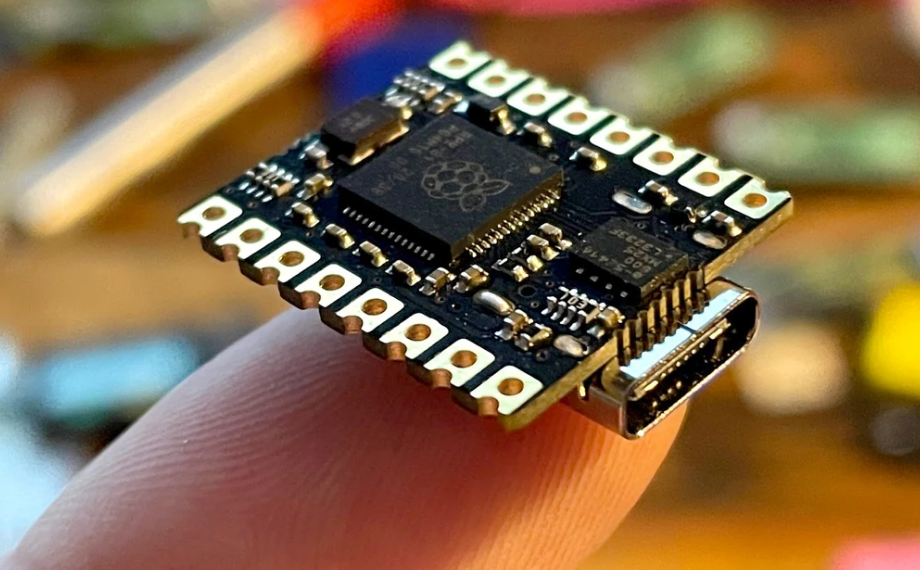
As mentioned above, the board is very small. It literally fits on the tip of your finger. At the same time, its capabilities are enough to develop almost any project that can be implemented with Pico.
Yes, an important nuance - the new board has a USB-C connector, which is much more convenient than the microUSB connector for many projects. A nice little thing - the port pinout is on the back of the board. It immediately becomes clear where which output is and what to connect with what. To make it even clearer, you can use the official documentation .
Like Pico, the new board can be integrated into any circuit. Just keep in mind that the SoC is located on the back of the board, which adds about 1mm to the thickness of the single board.
In general, the board is very well suited for use in any system, be it large or miniature.
Working with Pimoroni Tiny 2040
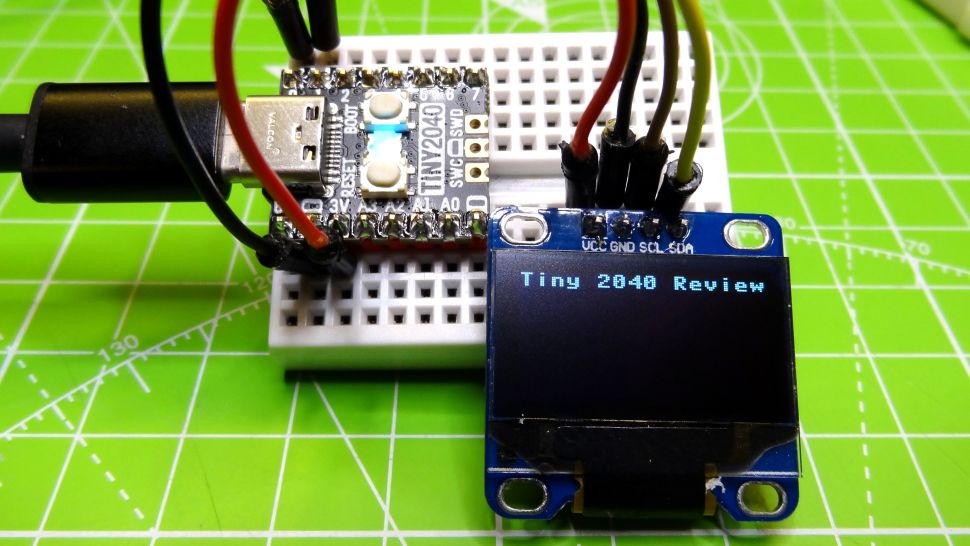
The 2040 is actually a tiny version of Pico, so all the manuals, code and everything else that was written for the "raspberry" will work for this board as well.
MicroPython from Adafruit works seamlessly. Everything works, right after installation you can code and control the board.
In a few minutes, the user was able to turn the board into a virtual USB keyboard. All this was done in a couple of minutes.
What can a developer expect from a board? You can use it everywhere and everywhere, it is especially relevant to work with it in projects where there is not very much physical space.
The Pimoroni Tiny 2040 is ideal for small robots, USB keyboards, science projects, teaching, and more. In addition, thanks to the ADC pins, the board can be used together with any controller or control unit that requires four potentiometers or two analog joysticks.
In the dry residue
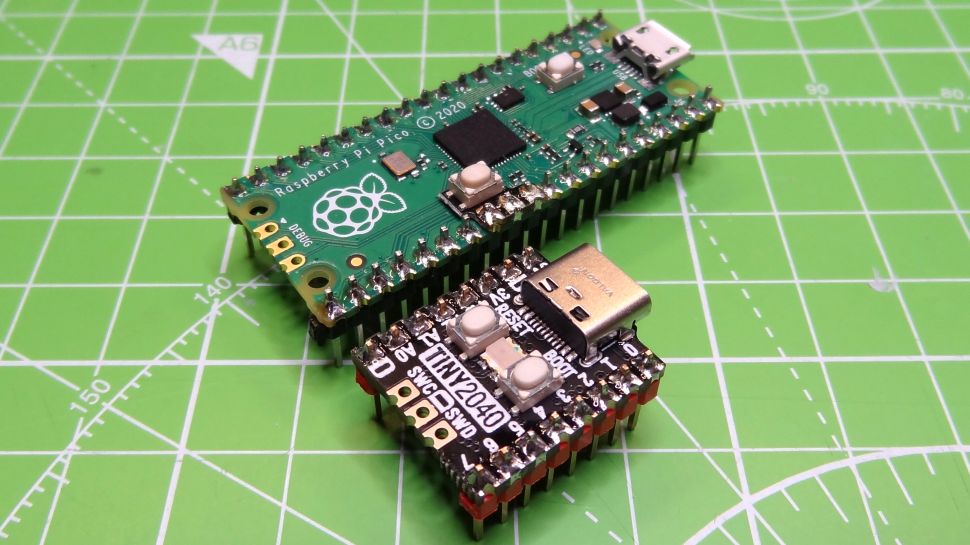
The Raspberry Pi Pico is a small but powerful tool. The Tiny 2040 is even smaller, albeit slightly more expensive. But you always have to pay extra for miniaturization. In addition, there are additional options here.
If you are working on a project that requires miniature but Pico functionality, then the Tiny 2040 is a great choice.
